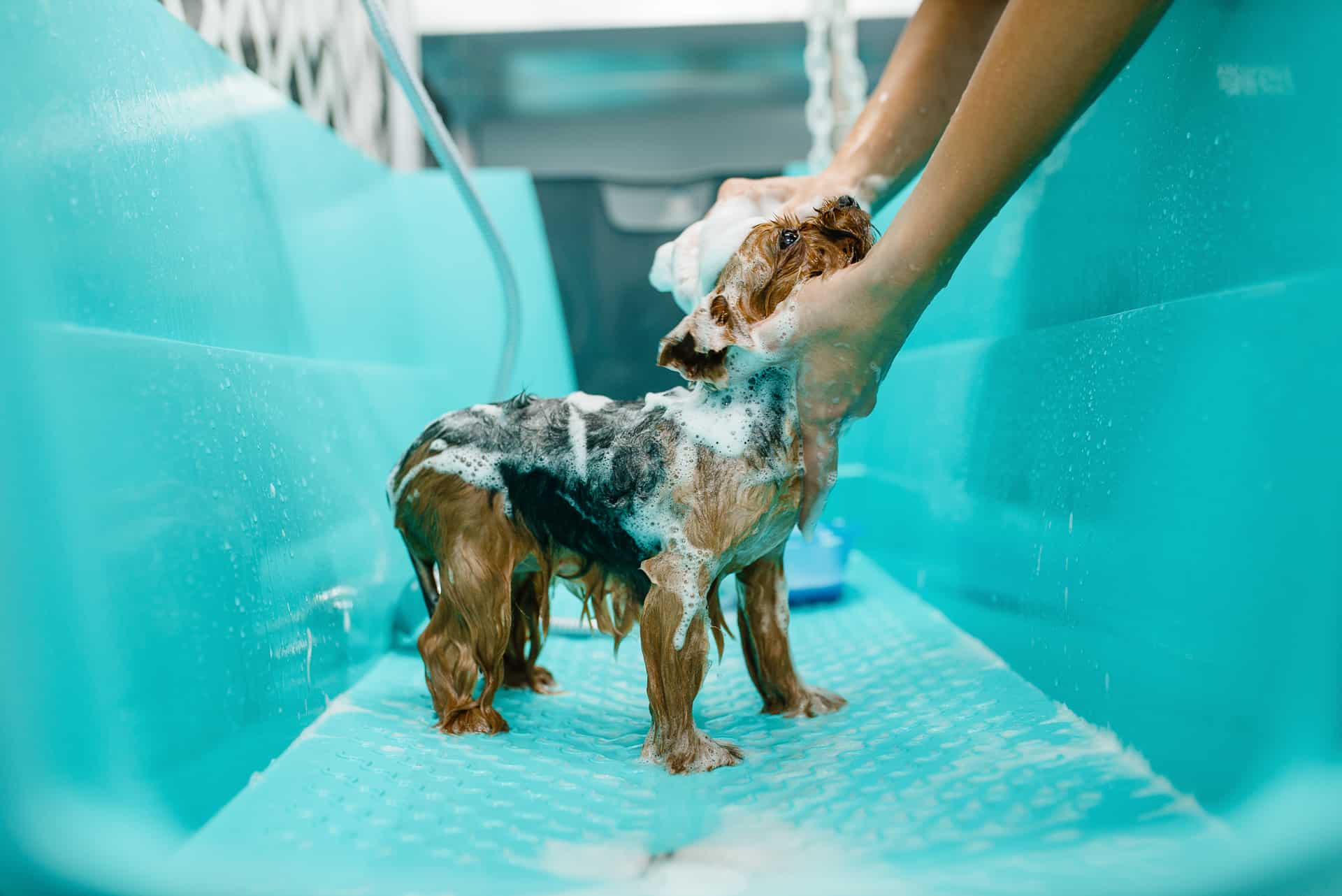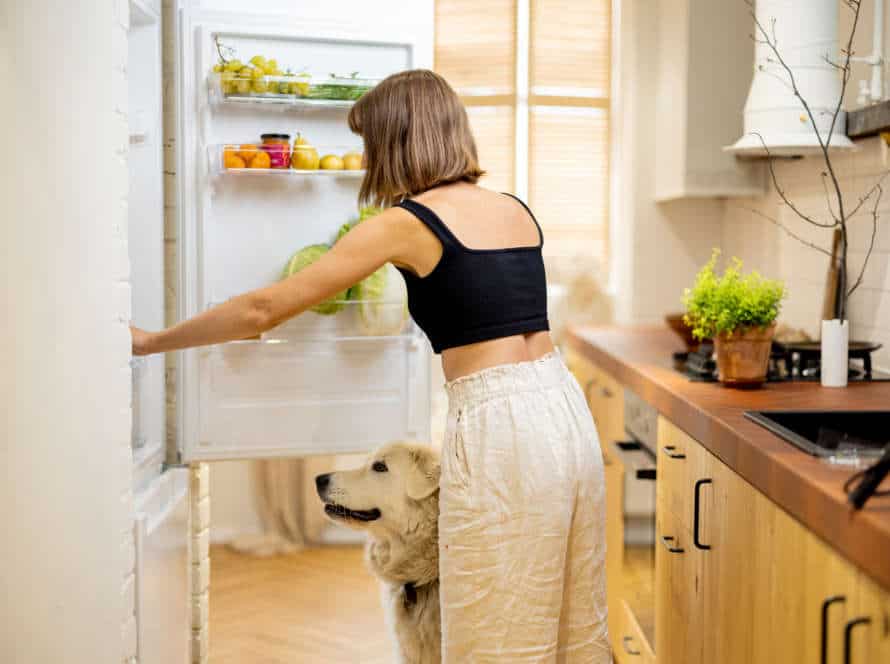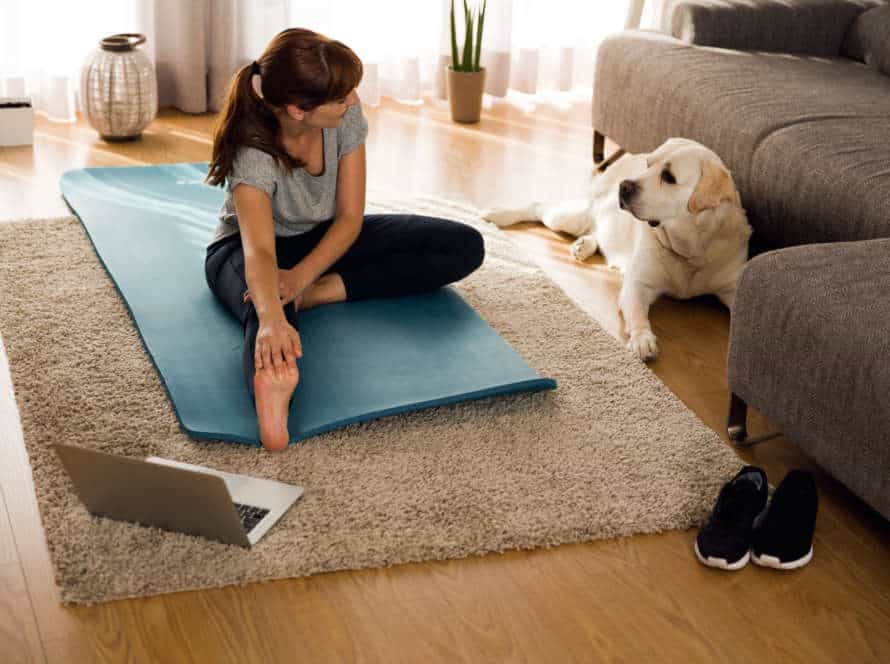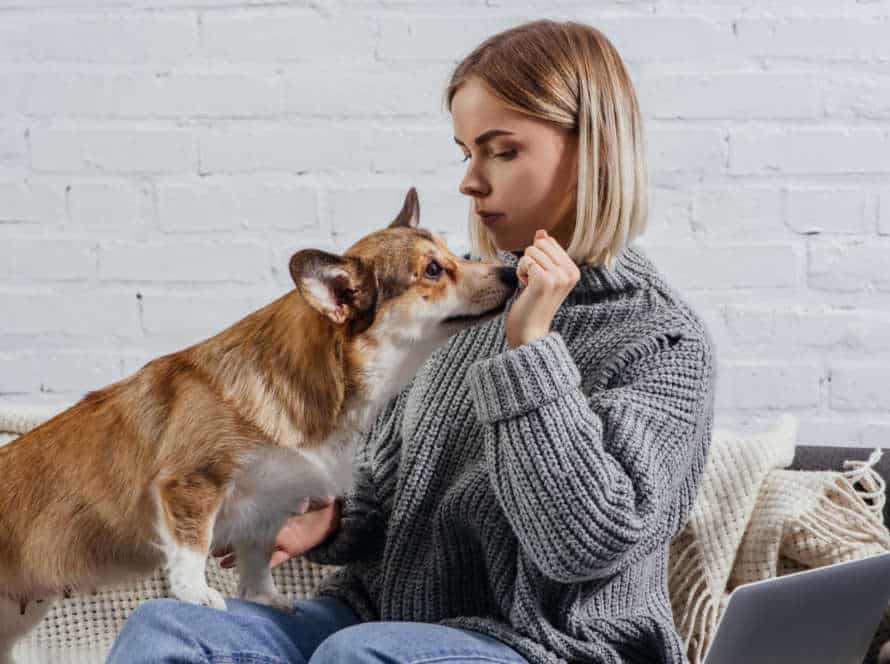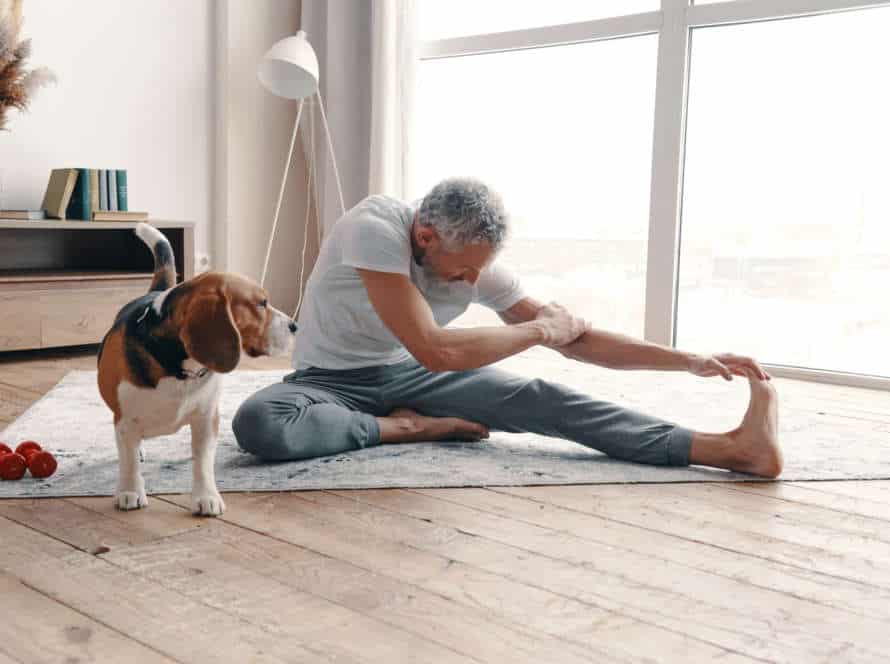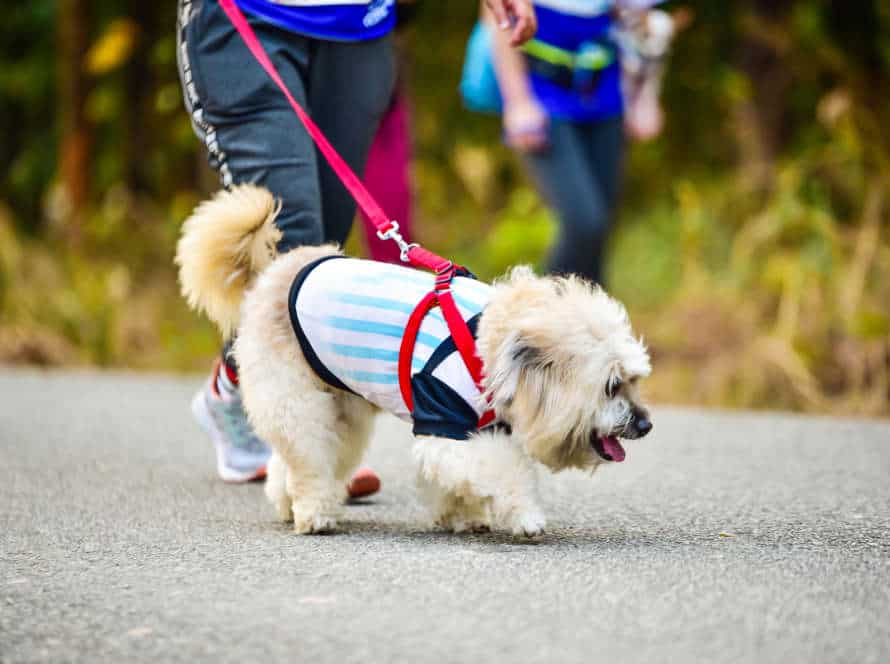Grooming Sensitive Areas: A Guide for Gentle Dog Care
Groomin’ yer furry friend’s sensitive spots can be tough. To make it easy, here’s a guide to gentle dog care:
- Ears: Check ’em weekly. Gently wipe inside with a soft cloth ‘n pet ear cleaner.
- Eyes: Wipe away discharge with a damp cloth. Don’t use soap or shampoo near eyes or it’ll irritate ’em.
- Paws: Keep nails trimmed and fur around paws too, to avoid matting. Check for redness or swellin’.
- Bottom: Use a pet-friendly wet wipe to clean yer pup’s bottom. Trim fur around their anus to keep it clean.
By followin’ these steps, yer pup will be groomed ‘n healthy. Pro tip: Reward ’em with treats or praise to make it a positive experience.
Grooming basics for sensitive dogs
Dog grooming is important – and extra care needs to be taken when it comes to sensitive areas. How you handle your pup is key to reducing both their stress and discomfort. It’s essential to know the basics of grooming sensitive areas. Here, we’ll cover those basics. Providing a stress-free experience for both you and your pup is the goal!
Understanding your dog’s behavior during grooming
Grasping your pup’s actions during grooming is critical for making sure they stay tranquil and unruffled while it happens. Know that each canine has a different personality and disposition, with some being more delicate to grooming than others. Here are some tips to recall:
- Introduce your pooch to the grooming stuff gradually. Let them smell and look at the tools, e.g. brushes and clippers, before starting to groom.
- Go slow and be tender. Quick or rough movements can shock or disconcert your pup.
- Take a break if your pup looks worried, and continue grooming when they have settled down.
- Reward your dog with treats and appreciation for sitting still and being tranquil during grooming.
- Notice your pup’s body language, like whimpering or shying away, which could signify distress or anxiety.
By observing and responding to your pup’s behavior while grooming, you can guarantee a positive and stress-free experience.
Choosing grooming tools suitable for sensitive dogs
Sensitive dogs need special care when being groomed. Choosing the right tools can make them more comfortable. Here are some tips:
- Use a soft-bristled brush.
- Detangling combs with wide-spaced teeth.
- De-shedding tools with rounded edges.
- Nail clippers with a safety guard.
- Shampoo/conditioner for sensitive skin.
The right grooming tools will make your pup’s routine stress-free. Pro tip: Treats and positive reinforcement during/after grooming!
Techniques for safe and effective grooming
Gently grooming your sensitive pup is a must for their comfort and safety. Here’s some tips to keep them clean, comfy and healthy:
- Use a soft-bristled brush for their coat.
- Don’t use harsh chemicals when bathing.
- Areas like ears, paws and belly need extra care.
- Trim hair with blunt-tipped scissors – no cuts or scratches!
Plus, give treats during and after grooming to link it with something positive.
Grooming specific sensitive areas
Grooming your pup’s delicate spots can seem scary. Knowing the basics of grooming these areas is essential for your pet’s safety. Use the right steps and products to make sure your dog’s groom is successful. Here are some tips on safely grooming your pup’s sensitive areas.
Ears
As a responsible pup parent, it’s key to be aware of grooming sensitive areas, like their ears. Here are a few tips for gentle ear care:
- Examine your pup’s ears often for any infection signs, like redness, swelling, or discharge.
- Clean out dirt or wax buildup with a damp cloth or gentle cleanser.
- Never use Q-tips or sharp objects, as they can harm the ear canal and cause injury or infection.
- If your pup has long ear hair, trim it often to avoid tangling and matting.
- At bath time, use a washcloth to clean their ears but be careful not to get water inside the ear canal.
- Reward your pup with treats and praise for good behavior during grooming.
How to clean ears without causing discomfort
Cleaning your pup’s ears can be tough. Do you know how? Here’s the right way, to avoid discomfort:
- Inspect for discharge, redness, or swelling. If your dog is uncomfortable, get help from your vet.
- Moisten a cotton ball or pad with ear cleaning solution. Lift the ear flap to reveal the canal.
- Gently insert the pad and wipe away debris in circles.
- Do this with a fresh pad until the ear is dry.
- Never go farther than the visible part of the canal. Don’t use cotton swabs or hydrogen peroxide.
Using these steps will make ear cleaning a stress-free experience for both you and your pet!
Common ear problems and how to handle them
Dogs can suffer from various ear issues. Such as infections, mites, and allergies. Symptoms may include itching, redness, discharge, and a bad smell. Here’s what to know about common ear issues:
- Ear Infections: A common problem. They can be caused by bacteria, yeast, or something else. Severe cases need vet treatment. But mild ones can be managed with eardrops and cleaning a few times a week.
- Ear Mites: These tiny critters cause itching, shaking of the head, and discharge. Treat with medicated eardrops or insecticides.
- Allergies: Dogs can be allergic to food, pollen, or other environmental factors. This may lead to inflammation and itching. Visit the vet for medicated eardrops or oral medicines. To prevent problems, groom, clean, and monitor your pup’s ears.
Paws and nails
Grooming sensitive areas like paws and nails on your pup needs extra attention and care. Here’re tips to get it right:
- Check paws regularly for cuts, wounds, and foreign objects like burrs, thorns, or stones.
- Keep paws dry to avoid infection.
- Trim fur around paw pads to prevent matting and keep it clean.
- Trim nails regularly to avoid discomfort, injury, and infection.
- Use sharp, high-quality clippers or a grinder for dogs.
- Avoid cutting the quick, the pink part, as it can be painful and lead to bleeding.
- Distract pup with treats or toys, take breaks if needed.
Pro tip: Have styptic powder or cornstarch handy in case of accidental cutting of the quick.
Trimming nails without hurting your dog
Trimming your pup’s nails is an important part of grooming. However, it can be tough, especially if they have sensitive feet. Here are some tips to help make it easier:
- Get your dog used to having their paws handled. Play or give them a massage.
- Use sharp, high-quality nail clippers made for dogs.
- Gently, but firmly, hold your doggy’s paw. Look at the nail carefully. Avoid the quick – the pink/red part with blood vessels and nerves.
- Snip off the end of the nail slowly. Stop when you see white/grayish color.
- If the nails are black, trim small bits at a time. Stop when you see blood.
- Reward your pup with praise, rewards and treats throughout the process.
- If you’re unsure, ask a professional groomer or vet for help.
Treating and preventing paw injuries
Keep your pup’s groomin’ needs in check! Here’s a guide to paw-fect care:
- Nails: Trim ’em to avoid breakage, but be careful of dark ones – their quick may be hard to identify.
- Paws: Scan for cuts, bruises, and foreign objects like glass, ticks, or burrs.
- Ears: Redness? Swelling? Discharge? Odor? Keep an eye out for ear infections if your pooch has floppy ears or swims often.
- Tail: Check the tail feathers for mats, fecal matter, and other debris. These can cause irritation and infection if left unchecked.
Pro tip: Groom regularly not only for injury prevention, but also to build a bond with your furry friend. Be gentle, use positivity, and don’t forget treats and praise!
Belly and groin
The belly and groin areas of your furry friend need special attention when grooming. Here are some tips to help:
- Use a brush with soft bristles to groom these areas.
- Cut the hair using rounded-tip scissors, taking care not to nick their skin.
- Clean the area with a warm and damp washcloth afterwards.
- For long-haired dogs or those prone to matting, keep these areas trimmed to stop matting.
- Watch for signs of discomfort such as excessive licking or scratching and seek advice from a vet if needed.
Following these tips will make grooming more comfortable and safe for your pet.
Proper techniques for trimming and cleaning sensitive areas
Grooming sensitive areas on dogs is essential for their hygiene and health. Here’re some tips:
- Ears: Check for signs of infection, swelling, or discharge. Wipe with a gentle ear cleaning solution and cotton balls. Don’t use swabs or insert anything.
- Eyes: Use a warm wet cloth for tear stains or crust. Trim hair with scissors.
- Paws: Trim hair around the paw pads with clippers. Trim overgrown nails with a nail clipper, being careful not to cut the quick.
- Genitalia: This area is very sensitive. Trim overgrown hair with scissors. Avoid water or soap in these areas – it may cause irritation or infection.
Regular grooming is necessary for your furry friend’s wellbeing.
How to handle and prevent skin irritation
Groom sensitive areas of your pup with care! Here are some tips to follow:
- Use a soft touch when dealing with ears, paws, and genital areas. Don’t use too much pressure, or they could get hurt.
- Brush their fur regularly. This helps get rid of dirt and dead skin cells that can cause irritation. Use a soft brush or rubber mitt for best results.
- Choose a mild shampoo for baths. Avoid any with harsh chemicals, perfumes, or colors that could irritate their skin.
- Dry them off after swimming or bathing. Use a clean towel or a low heat hairdryer.
- Look out for signs of irritation. Check every now and then for redness, swelling, or itchiness. If you see any of these, reach out to your vet for advice.
By following these tips, you can help make grooming enjoyable for your pup and prevent skin irritation.
Grooming sensitive dogs with medical conditions
Groomin’ pooches with medical issues and sensitive zones can be a challenge. If done wrong, it can bring ’em pain, unease, and even more aggravation. Understandin’ how to groom sensitive areas can help make sure your pup gets the best care imaginable. Let’s see how to groom touchy areas of a pup who has medical troubles.
Allergies
Grooming a pup with special needs? Here’s a helpful guide!
Ears: Clean around the flap and hole with a soft cloth and a solution made for pooches. Don’t use cotton swabs or go too deep – ouch!
Paws: Trim the hair between their paws to avoid matting and debris – use a paw groomer and be gentle.
Skin: Use a hypoallergenic or vet-recommended medicated shampoo. Brush through with a soft-bristled brush or comb. Massage and lather, then rinse off!
Tail: Gently brush the tail and use detangle spray for knots. Use dog scissors to trim hair around the anus – no fecal matter buildup!
Overall, take it slow and be patient. If you need help, don’t hesitate to call a professional.
Identifying allergy symptoms and triggers
Identifying allergies in dogs is super important, especially if they have sensitive skin. Symptoms include: itching, redness, swelling, and sneezing/coughing.
Possible triggers can be food, environmental factors like pollen, grooming products, or fleas.
To figure out what your pup is allergic to:
- Speak to your vet and get them tested
- Monitor reactions after contact with different factors
- Log their diet/exposure to potential allergens
Once the triggers are identified, take steps to remove them from your pup’s environment. Use gentle grooming products and regular vet check-ups to monitor allergy symptoms.
Grooming tips for dogs with allergies
If your pup has allergies or medical issues, you must stick to a good grooming routine. This keeps them clean and comfy without harming their health. Here are some tips for grooming a dog with allergies:
- Use hypoallergenic shampoos and conditioners. Pick grooming products specially made for dogs with allergies or delicate skin. These can reduce itchiness, inflammation, and skin irritation.
- Brush the fur frequently. This removes dirt, allergens, and debris. It also spreads natural oils across the coat, keeping it clean and healthy.
- Carefully trim sensitive spots. While cutting around places like the paws, ear flaps, and joints, be very careful not to puncture or cut the skin. Do not trim too close to the skin, as this can cause burns and irritation.
- Check the skin often. Keep an eye out for any odd growths, rashes, or irritations. If you notice anything, see a veterinarian right away.
Skin conditions
Caring for dogs with skin conditions? Be cautious with grooming. Here’s a guide!
- Find non-irritant products. Avoid chemicals like alcohol & synthetic additives.
- Lukewarm water is best. Avoid extremes to prevent irritation.
- Gently brush or trim. Avoid the rash or infected areas.
- Use appropriate tools. Soft brushes & gloves for sensitive areas.
Tailor the routine to your dog’s needs. Minimize allergies and irritation.
Identifying common skin conditions and associated grooming challenges
Dogs that are sensitive and have medical conditions need special attention when grooming. This is due to certain medical issues potentially causing skin conditions, which can make grooming challenging. To better care for your pup, it’s important to recognize these skin conditions and their related grooming difficulties.
Examples:
- Allergies: If your dog has allergies, they may have itchy, red, or inflamed skin, rashes, or hives. Grooming can reduce exposure to allergens and ease symptoms, but take caution not to irritate the skin further.
- Arthritis: Dogs with arthritis may experience stiffness, joint pain, or muscle weakness, making grooming difficult and uncomfortable. Thus, grooming must be modified to fit your dog’s physical capabilities.
- Ear infections: Dogs with ear infections could present redness, discharge, odor, or irritation around the ears. Grooming should center on ear cleaning and maintenance to avoid and manage infections.
- Hot spots: Hot spots may cause localized skin irritations and infections in canines. Grooming needs to involve special treatments and techniques to aid in soothing and healing the affected areas.
Recommended grooming techniques for dogs with skin conditions
Grooming dogs with skin conditions requires special care. Use mild, hypoallergenic shampoos and conditioners made for sensitive skin. Don’t use human products, they can be too harsh. Use lukewarm water to avoid drying out the skin. Be gentle when brushing, especially around affected areas. Trim the hair around those areas to promote airflow and stop matting. Use a soft, clean towel when drying – don’t rub hard. Monitor your dog’s skin and consult with a vet if there are signs of discomfort.
Arthritis and joint issues
Dogs with arthritis or joint issues can find grooming tricky. If your pup has a medical condition that causes sensitivity, extra care should be taken when grooming sensitive areas. Here’s some advice:
- Brush and groom your pup in a comfy spot, such as on a cushion or mat.
- Avoid any sudden or harsh movements that can cause pain.
- Gently brushing and massaging around the affected areas can help improve circulation and decrease inflammation.
- If your dog is in extreme discomfort, seek the help of a professional groomer or vet.
Minimizing stress during grooming is key to making the experience positive for your pup.
Understanding the needs of dogs with arthritis and joint issues
Dogs with arthritis or joint issues need special care. It’s vital to understand and meet their needs for a happy life. Here are some tips for grooming sensitive dogs with medical conditions:
- Use a supportive table to lift them and reduce risks of injuries.
- Use soft grooming tools, like slicker or rubber curry brushes, to avoid pain.
- Avoid areas with inflammation, redness, or irritation.
- Place non-slip mats or towels to give more support and avoid falls.
- If your dog is in a lot of pain, take them to a professional groomer with experience in handling sensitive dogs with medical conditions.
Grooming tips to manage arthritis and joint pain during grooming
If you have a pup with arthritis or joint pain, grooming can be hard and even painful. Fortunately, there are some simple tips to make the process smoother and more comfortable.
- Get a grooming table! It raises your dog off the ground, so they don’t have to stand or bend for too long. It reduces strain on their joints.
- A grooming harness is a great way to give them stable and gentle support. Plus, it can stop falls and injuries.
- Use soft brushes and towels. They are gentle on your doggo’s skin and joints, unlike stiff brushes or harsh materials.
- Breaks! Give them a rest and change positions every few minutes. It prevents fatigue and soreness.
By using these tips, you can keep your pet clean and comfy without making their arthritis or joint pain worse.
Safety tips for grooming sensitive dogs
Grooming a pup can be a fun experience for both the pet and the pet parent. But, with sensitive areas, like ears, face, and paws – safety should be the number one concern. Here’s a few tips for a safe and enjoyable grooming session:
- Use caution when dealing with sensitive areas.
- Use the right tools to do the job.
- Ensure your pup is comfortable throughout the process.
How to reduce anxiety and stress during grooming
Grooming can be tough on sensitive dogs. However, there are ways to reduce their stress. Here’s what to do:
- Introduce grooming tools such as brushes, combs and clippers in a safe place.
- Comfort your pup with a calming voice.
- Take breaks and give treats for good behaviour.
- Be gentle when handling delicate areas like ears and paws.
- Reward positive behaviour and correct undesirable behaviour.
By doing this, you can keep your sensitive dog feeling safe and calm while grooming.
Handling grooming emergencies
Handling grooming emergencies carefully is key to keeping your furry friend safe. Here are some tips:
- Custom Grooming Routine: Find what your pet needs and set up a personalized routine. This will help avoid any unexpected scares.
- Calming Techniques: Use gentle petting, soft talking or aromatherapy before grooming. This will help your doggo stay relaxed.
- Grooming Equipment: Buy safe equipment like scissors, razors and nail clippers – designed for dogs. This will help avoid injuries.
- Avoid Sensitive Areas: Be delicate when grooming delicate areas such as face, ears, private parts and paws. A bit of caution and patience helps keep your pet safe.
- In case of accidents, stay calm. Stop any bleeding immediately. If needed, get professional help for emergency care. Always prioritize your pet’s safety.
Preparing a first-aid kit for grooming emergencies
It’s important for pet owners who groom their pets at home to prepare a first-aid kit. Here are some essential items to include:
- Scissors – sharp ones for trimming, cutting matted fur, bandages, or band-aids.
- Styptic Powder – for stopping bleeding from nail trimming, cuts, or scratches.
- Saline Solution – to flush foreign objects from eyes.
- Cotton Balls and Swabs – to apply antiseptics or other solutions.
- Gauze and Medical Tape – to wrap wounds or cover padded areas.
- Splints or tongue depressors – for binding broken bones or other limb injuries.
- Tick Remover/Tweezers – to remove ticks, thorns, or debris.
Pro tip: Make sure the first-aid kit is easily accessible during grooming.
Frequently Asked Questions
1. Why is it important to groom sensitive areas of my dog?
Regular grooming of sensitive areas such as ears, paws, and private parts can prevent infections and promote overall hygiene. It also helps in early detection of any skin or health-related issues.
2. What tools and products should I use for grooming sensitive areas of my dog?
You should always use mild shampoos, conditioners, and fragrance-free grooming products. For tools, you can use soft-bristled brushes, grooming scissors, and toothbrushes to clean teeth and gums gently. Always choose the right size and quality tools to make the grooming process gentle and smooth for your dog.
3. How often should I groom the sensitive areas of my dog?
The frequency of grooming sensitive areas depends on the breed, age, and overall health of your dog. Ideally, you should groom your dog’s ears, paws, and private parts every week to ensure good hygiene and health.
4. What are some tips and tricks for grooming sensitive areas on my dog without hurting them?
Always begin with small and gentle strokes and progress slowly without pulling the hair or causing discomfort to your dog. Use treats and positive reinforcement techniques to create a positive experience for your dog.
5. What should I do if I notice any unusual symptoms or signs after grooming my dog’s sensitive areas?
If you notice any signs of swelling, redness, discharge, or persistent itching after grooming, contact your veterinarian immediately. These symptoms can be signs of an underlying health problem that needs medical attention.
6. Can I groom my dog’s sensitive areas at home, or should I take them to a professional groomer?
You can groom your dog’s sensitive areas at home if you have the right products and tools, and your dog is comfortable with the grooming process. However, if you are unsure or have any concerns, it is always best to take your dog to a professional groomer who can provide expert care.

